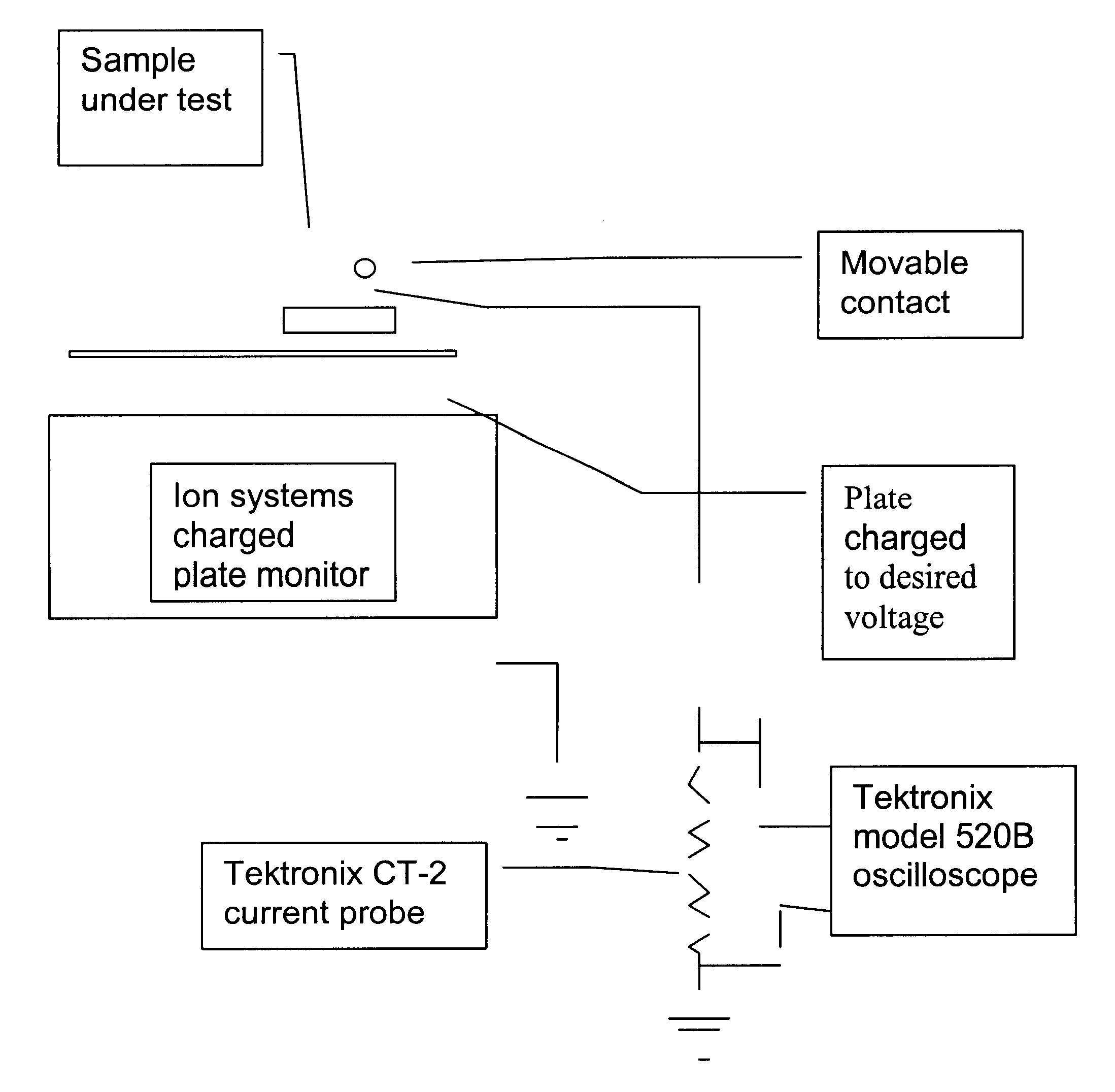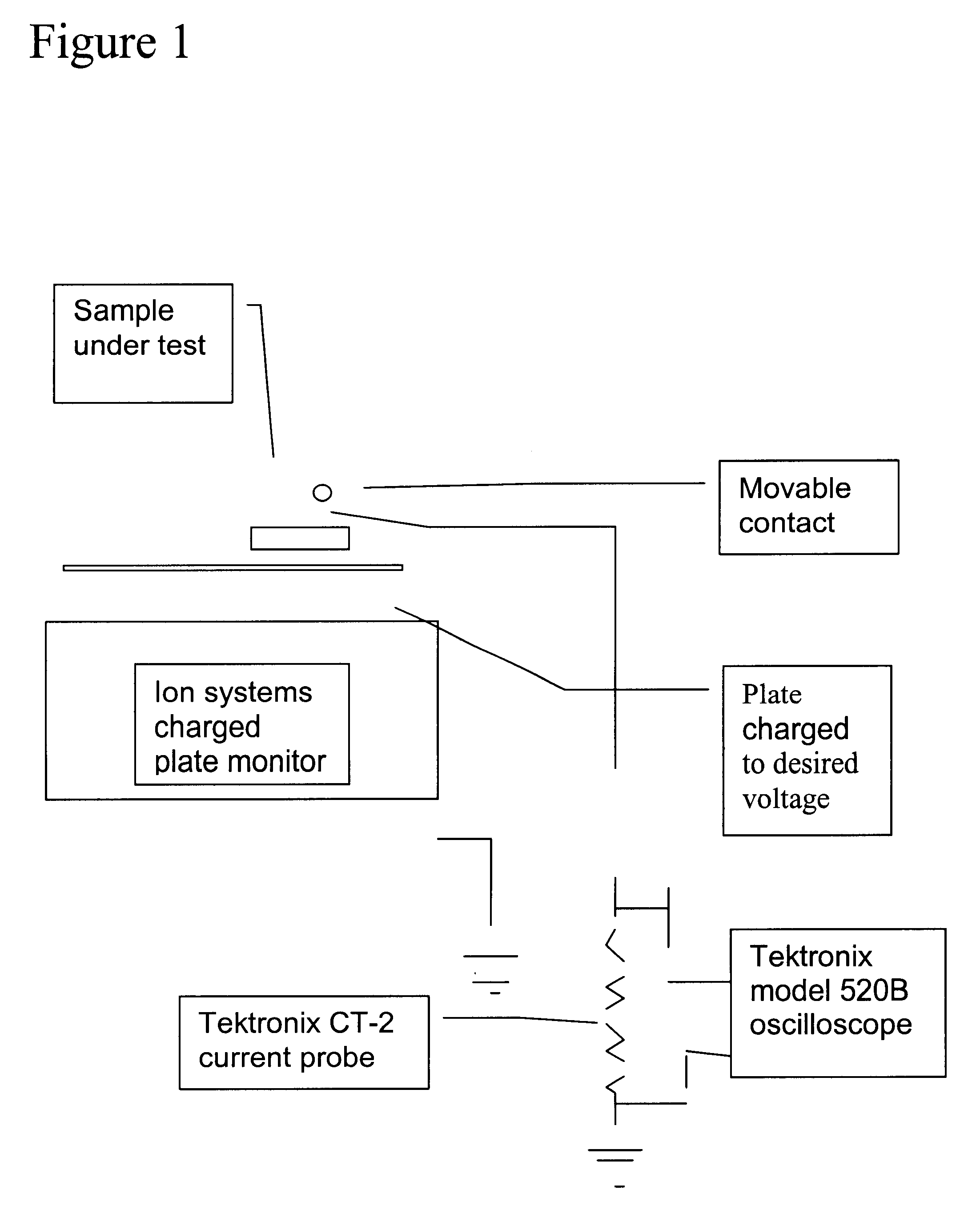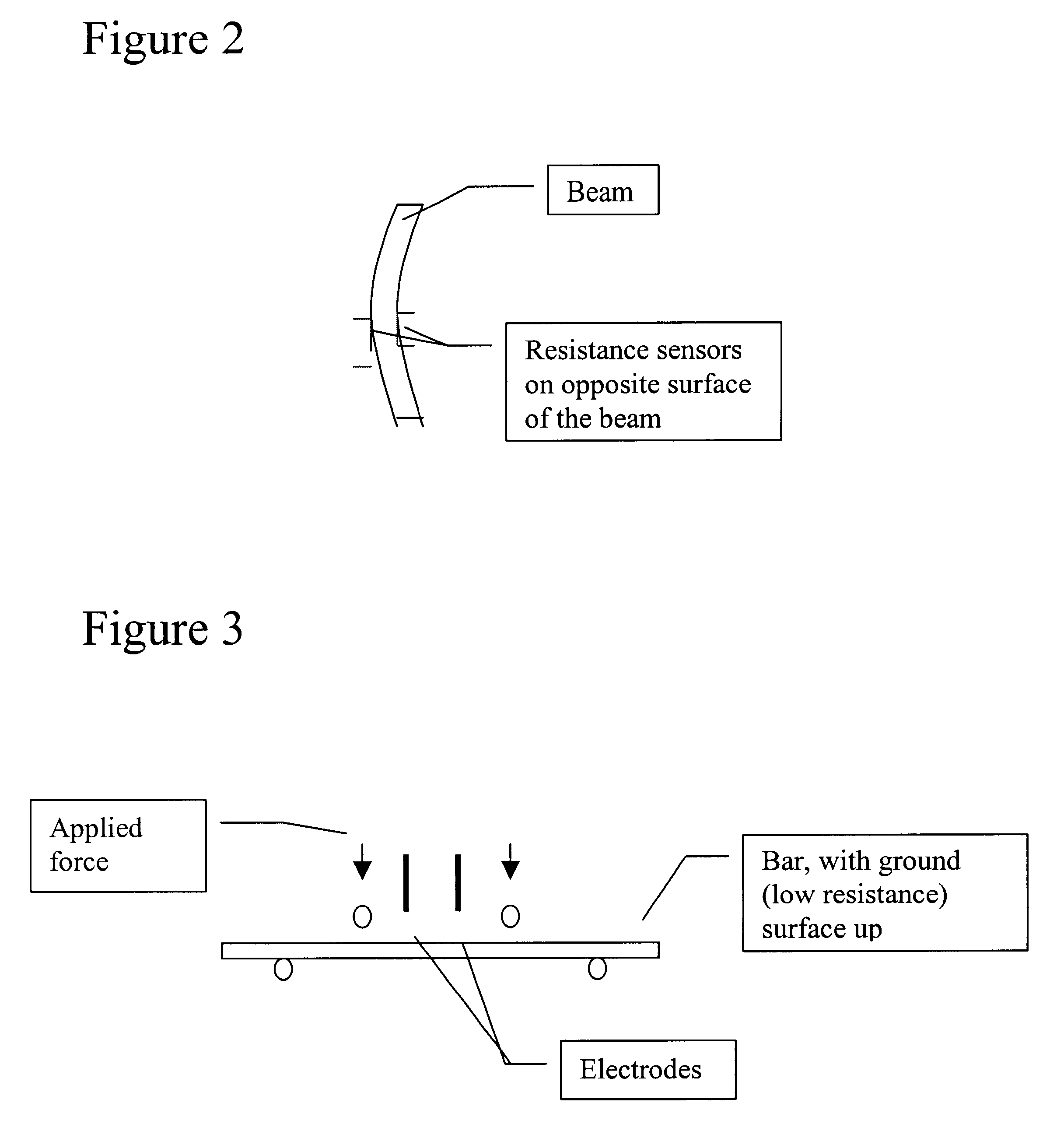ESD dissipative ceramics
- Summary
- Abstract
- Description
- Claims
- Application Information
AI Technical Summary
Benefits of technology
Problems solved by technology
Method used
Image
Examples
example 1
ZnO
A Y-TZP powder containing about 2.8 mol % yttria (YZ110) available from Saint-Gobain Ceramics & Plastics (SGC&P) was mixed in water with varying amounts of zinc oxide available from Zinc Corporation of America in a jar mill with Y-TZP milling media. The surface areas of YZ110 and ZnO powders were 7 and 20 m.sup.2 / g, respectively, prior to milling. The milled powder was granulated by a laboratory method to pressable powder. The powder was uniaxially pressed into steel molds at 40 MPa, and then cold isostatically pressed (or "CIPed") at 207 MPa to form green bodies.
The green bodies were sintered at 2.degree. C. / min to a desired sintering temperature (1350.degree.-1500.degree. C.) for 1 hr to achieve a sintered density of greater than 97% TD (theoretical density). The theoretical density was calculated by a mixing rule based on volume % of ingredients assuming no reaction between two phases during the sintering. Some sintered bodies were HIPed in Ar at 1300.degree. C. for 45 min to...
example 2
SnO.sub.2
A Y-TZP powder (HSY3.0) containing about 3 mol % yttria available from Zirconia Sales of America was mixed with varying amount of tin oxide (SnO.sub.2, T1186).sup.18 available from SGC&P in a jar mill with Y-TZP milling media. The powder has nominal dopants of 1% Sb.sub.2 O.sub.3 and 0.5% CuO for improved conductivity. Prior to the mixing the doped tin oxide was milled to surface area of .about.15 m.sup.2 / g. Surface area of Y-TZP was 7 m.sup.2 / g prior to milling. Another commercial tin oxide powder (available from Alfa Aesar, Ward Hill, Mass.) milled to a surface area of 12 m.sup.2 / g was also used. The milled powder was granulated by a laboratory method to pressable powder. The powder was uniaxially pressed into steel molds at 40 MPa, and then CIPed at 207 MPa to form green bodies. The green bodies were sintered at 2.degree. C. / min to a desired sintering temperature (1400-1500.degree. C.) for 1 hr to achieve a sintered density of greater than .about.95% T.D. The theoreti...
example 3
LaMnO.sub.3
A batch of LaMnO.sub.3 was prepared by the solid-state reaction of an equimolar powder mixture of La.sub.2 O.sub.3 and Mn.sub.2 O.sub.3 at 1400.degree. C. for 2 hr in air. The XRD of reaction formed powder indicated a well developed LaMnO.sub.3, a perovskite family. The reaction formed powder was milled in a plastic jar mill with Y-TZP milling media to BET surface area of 15 m.sup.2 / g. A batch of 30 vol % LaMnO.sub.3 / 3Y-TZP was processed using mixtures of LaMnO.sub.3 and Y-TZP (YZ110, SGC&P, Worcester, Mass.) followed by the same preparation method described in Example 1.
Samples were sintered at 1250.degree.-1350.degree. C. to greater than 98% T.D. The density of low temperature (1225.degree. C.) sintered samples was greater than 97% T.D. Sintered samples were HIPed at 1175.degree. and 1350.degree. C. at 207 MPa of argon to full density. The high temperature (1350.degree. C.) sinter-HIPed samples show a significant grain growth, formation of reaction phase, lanthanum zi...
PUM
| Property | Measurement | Unit |
|---|---|---|
| Fraction | aaaaa | aaaaa |
| Fraction | aaaaa | aaaaa |
| Fraction | aaaaa | aaaaa |
Abstract
Description
Claims
Application Information
 Login to View More
Login to View More - R&D
- Intellectual Property
- Life Sciences
- Materials
- Tech Scout
- Unparalleled Data Quality
- Higher Quality Content
- 60% Fewer Hallucinations
Browse by: Latest US Patents, China's latest patents, Technical Efficacy Thesaurus, Application Domain, Technology Topic, Popular Technical Reports.
© 2025 PatSnap. All rights reserved.Legal|Privacy policy|Modern Slavery Act Transparency Statement|Sitemap|About US| Contact US: help@patsnap.com



